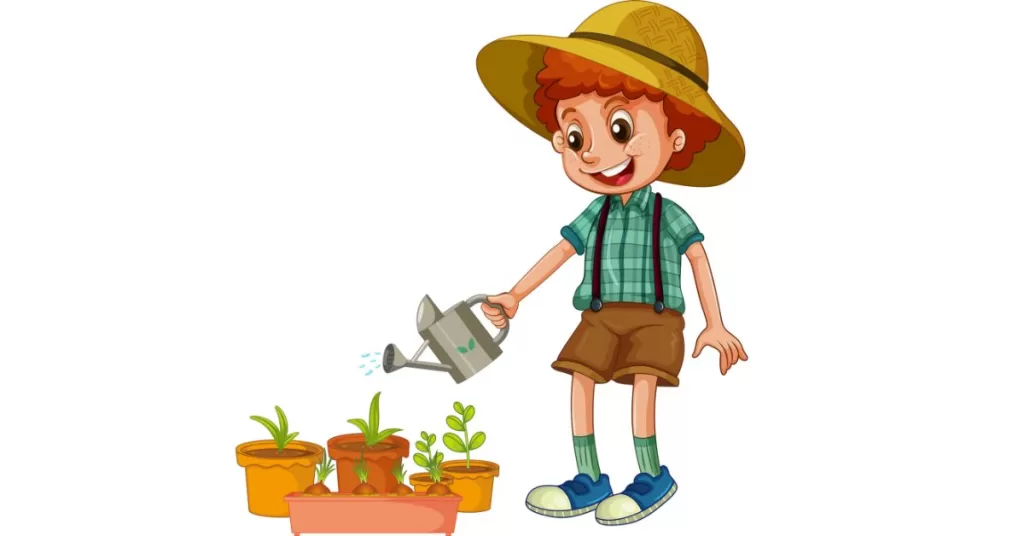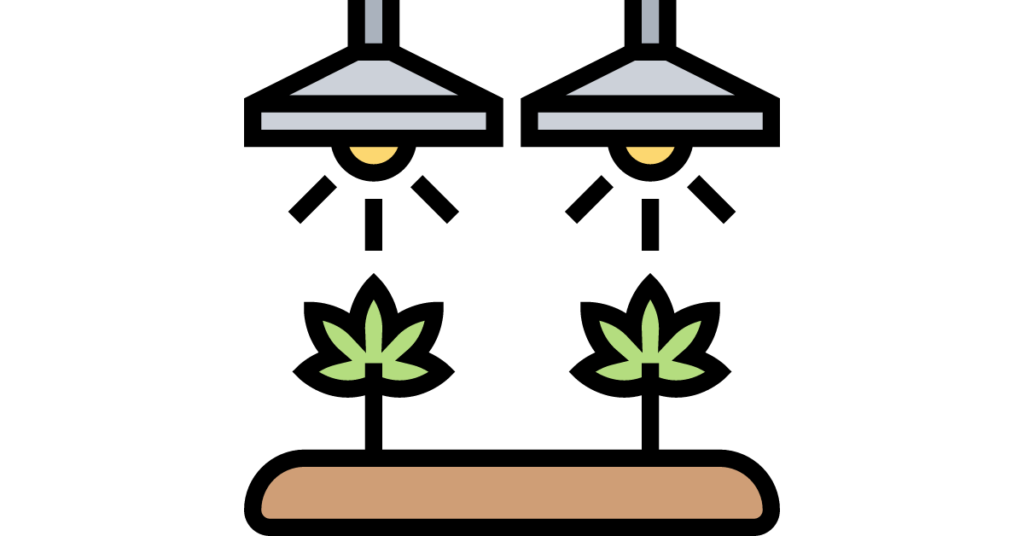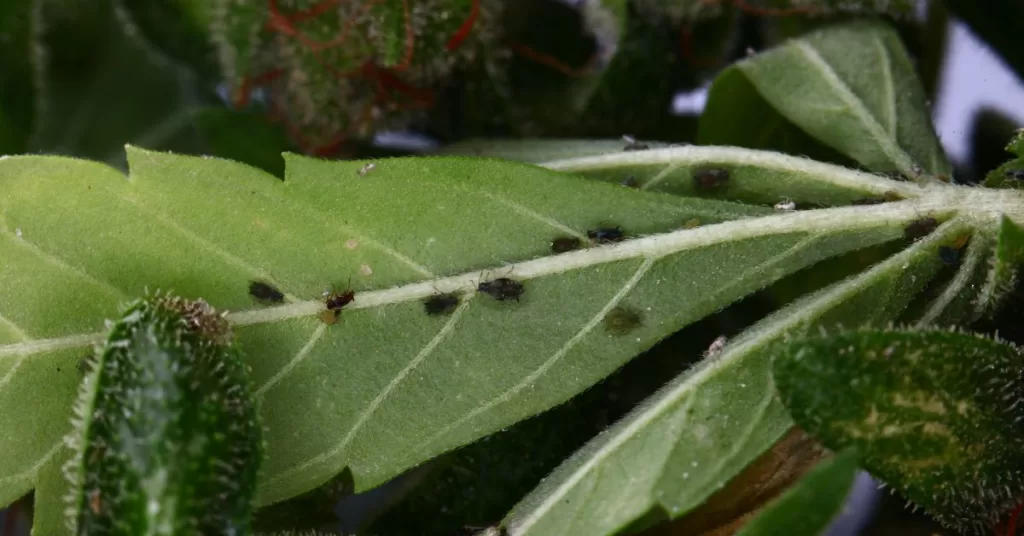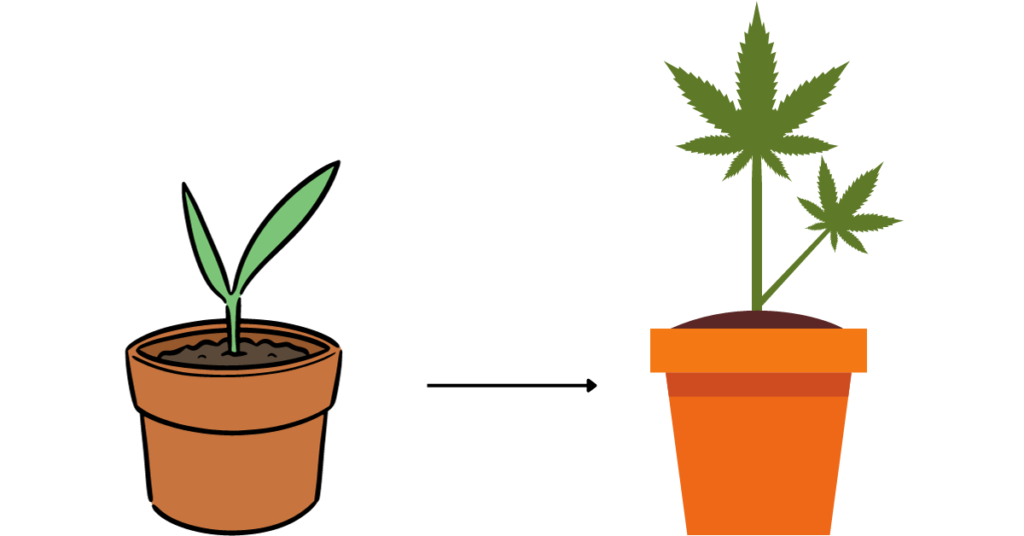Are your cannabis plants growing at a sluggish pace? If you’re a seasoned grower or a newbie to cannabis cultivation, you may face this issue at some point.
Slow cannabis growth plant can be a cause for concern, especially when you have invested significant time and effort into its care.
This comprehensive guide aims to provide in-depth knowledge about the reasons behind slow cannabis growth and the measures you can take to accelerate the process.
Table of Contents
Causes of Slow Cannabis Growth
Cannabis plants, especially autoflowering varieties, are known for their rapid growth rate under optimal conditions.
However, numerous factors can interfere with their growth, leading to slow cannabis growth or even a complete halt. Some of the most common causes include:
Nutrient Imbalance: One primary cause of slow cannabis growth is an imbalance of essential nutrients like nitrogen, phosphorus, and potassium. This deprives the plant of what it needs to grow robustly.
Suboptimal Lighting: Slow cannabis growth can also be due to inadequate lighting, whether in intensity or duration. Cannabis plants require ample light to photosynthesize and grow.
Poor Soil Quality: The soil’s quality directly affects the rate of cannabis growth. Poor soil lacks essential nutrients and good drainage, contributing to slow development.
Overwatering or Underwatering: Both extremes can result in slow cannabis growth. Overwatering causes root rot, while underwatering leads to stress and stunted development.
Pests and Diseases: Infestations like spider mites or diseases such as mold can also be responsible for slow cannabis growth. They stress the plant and draw away essential nutrients and energy.
Inadequate Air Circulation: Poor air movement around your plants can contribute to slow cannabis growth. This can result in issues like mold and mildew, which further impede growth rates.
Incorrect pH Levels: Cannabis plants prefer slightly acidic soil. Slow cannabis growth can occur if the pH level is either too high or too low, affecting nutrient absorption.
Temperature Fluctuations: Extreme temperatures, either too hot or too cold, can result in slow cannabis growth. The plant expends energy trying to survive rather than growing.
Root Restriction: Limited space for root expansion is another cause of slow cannabis growth. Make sure to transplant your cannabis plants if you notice their roots are becoming bound.
Genetic Factors: Sometimes, the reason behind slow cannabis growth is genetic. Different strains have different growth rates, and some are naturally slower growers.
How to Solve Slow Cannabis Growth
Understanding the Genetics
Just like humans, cannabis plants inherit traits from their parent strains. The genetic makeup of a cannabis plant can greatly influence its growth rate.
If you’re working with seeds that have poor genetics, your plants may take longer to germinate and develop. In contrast, high-quality seeds from reputable seed banks can lead to faster and healthier growth.
Dealing with Poor Genetics
If you’re dealing with slow-growing cannabis plants, the first thing to consider is the quality of your seeds. If you’ve sourced your seeds from an unreliable source or they’ve been sitting around for a long time, they might have poor genetics. This can result in slower germination and development.
Choosing High-quality Seeds
To overcome the issue of poor genetics, always source your seeds from reputable seed banks. High-quality seeds have strong genetics that promote fast and healthy growth. Moreover, always store your seeds properly to maintain their quality.
Nutrient Deficiencies
Cannabis plants require a variety of nutrients to grow and thrive. These include macronutrients like nitrogen, phosphorus, and potassium, and micronutrients like calcium, magnesium, and iron. A deficiency in any of these nutrients can hinder your plant’s growth.
Identifying Nutrient Deficiencies
Nutrient deficiencies often manifest as discoloration or deformities in the leaves. For instance, a nitrogen deficiency might cause the leaves to turn yellow, while a calcium deficiency can lead to distorted growth.
Addressing Nutrient Deficiencies
If you identify a nutrient deficiency, the first step is to adjust your feeding regimen. Make sure you’re providing your plants with a balanced nutrient solution suitable for their growth stage. If the deficiency persists, you might need to adjust the pH levels of your growing medium to improve nutrient uptake.
Overwatering and Underwatering

Water is crucial for cannabis plants, but too much or too little can be detrimental. Overwatering can lead to waterlogged soil and oxygen-starved roots, while underwatering can leave your plants dehydrated and stunted.
Recognizing Overwatering and Underwatering
Overwatered plants often appear droopy, with leaves that are dark green and curling downwards. Underwatered plants, on the other hand, may have crispy, dry leaves that curl upwards.
Correcting Watering Mistakes
The key to proper watering is balance. Always allow the top layer of your soil to dry out before watering again. This will ensure that your plants receive just the right amount of moisture without becoming waterlogged.
Light Issues

Light plays a crucial role in the growth of cannabis plants. It powers the process of photosynthesis, which is how plants convert light into energy for growth. However, too much or too little light can lead to problems.
Insufficient Light
Cannabis plants that aren’t receiving enough light will often exhibit slow growth. They may also stretch towards the light source, resulting in long, thin stems and sparse foliage.
Excessive Light
On the other hand, too much light can cause light burn, resulting in yellow or brown spots on the leaves. This can stress the plant and slow down its growth.
Correcting Light Issues
If your plants aren’t getting enough light, consider moving them to a sunnier location or investing in stronger grow lights. If they’re getting too much light, you may need to move your lights further away or reduce their intensity.
Environmental Factors
Cannabis plants thrive in a warm, slightly humid environment. If the temperature is too high or low or the humidity levels are off, your plants may grow slowly.
Temperature Issues
Temperatures that are too high can cause heat stress, leading to wilting, curling leaves, and slow growth. On the other hand, temperatures that are too low can slow down your plant’s metabolic processes and stunt growth.
Humidity Problems
Low humidity can cause your plants to lose water faster than they can absorb it, leading to wilting and slow growth. High humidity, on the other hand, can create an ideal environment for mold and pests.
Adjusting Environmental Conditions
To correct temperature issues, aim to keep your grow space within the ideal range of 70-85°F (21-29°C). For humidity, aim for 40-70% for seedlings and young plants, and 40-50% for mature plants.
Root Problems

The health of your cannabis plant’s roots is directly tied to its overall growth. Issues like root rot, root bound plants, or damage from pests can all lead to slow growth.
Identifying Root Problems
Root problems can manifest in a variety of ways. Yellowing leaves, stunted growth, and wilting are all common signs of root issues.
Addressing Root Problems
If you suspect root problems, you may need to inspect the roots directly. This could involve gently removing the plant from its pot or using a microscope to look for pests. Depending on the issue, you may need to repot your plant, treat for pests, or adjust your watering regimen.
Pests and Diseases

Pests and diseases can wreak havoc on your cannabis plants, causing damage that slows down growth. Common culprits include spider mites, aphids, and fungi like powdery mildew.
Identifying Pests and Diseases
Pests and diseases often leave visible signs on your plants. This could include chewed leaves, white powdery spots, or small bugs crawling on your plant.
Treating Pests and Diseases
There are many methods for treating pests and diseases, ranging from homemade remedies to commercial pesticides and fungicides. The best treatment will depend on the specific issue you’re dealing with.
Stress from Training Techniques
While training techniques like topping, pruning, and low-stress training can improve yield and plant structure, they can also slow down growth if done too aggressively.
Identifying Stress from Training
If your plant’s growth slows down significantly after training, it may be a sign that the training was too stressful. You might also notice signs of physical damage, like broken branches or torn leaves.
Adjusting Training Techniques
If your plant is stressed from training, try to be gentler in the future. Always make clean, sharp cuts when pruning, and avoid bending or tying branches too tightly.
Inadequate Darkness
While light is crucial for photosynthesis, darkness is equally important for the process of respiration. If your plants aren’t getting enough darkness, their growth may slow down.
Recognizing Inadequate Darkness
If your plants are growing slowly and you’ve ruled out other issues, it may be worth examining their light cycle. Cannabis plants typically need 12 hours of darkness per day to thrive.
Adjusting the Light Cycle
If your plants aren’t getting enough darkness, try adjusting their light cycle. This could involve moving outdoor plants to a shadier location or setting a timer for your indoor grow lights.
Parting Remarks on Slow Cannabis Growth
Slow cannabis growth can be a frustrating issue, but with the right knowledge and techniques, you can address the problem and help your plants thrive.
By understanding the various factors that can impact growth, from genetics and light conditions to watering practices and root health, you can create an optimal environment for your cannabis plants and enjoy a successful and bountiful harvest.
